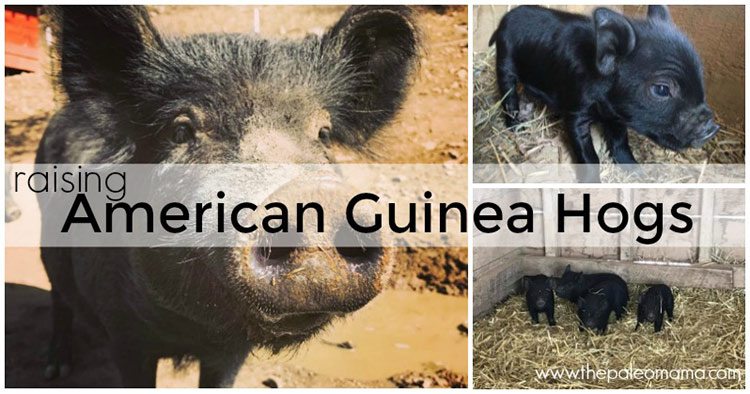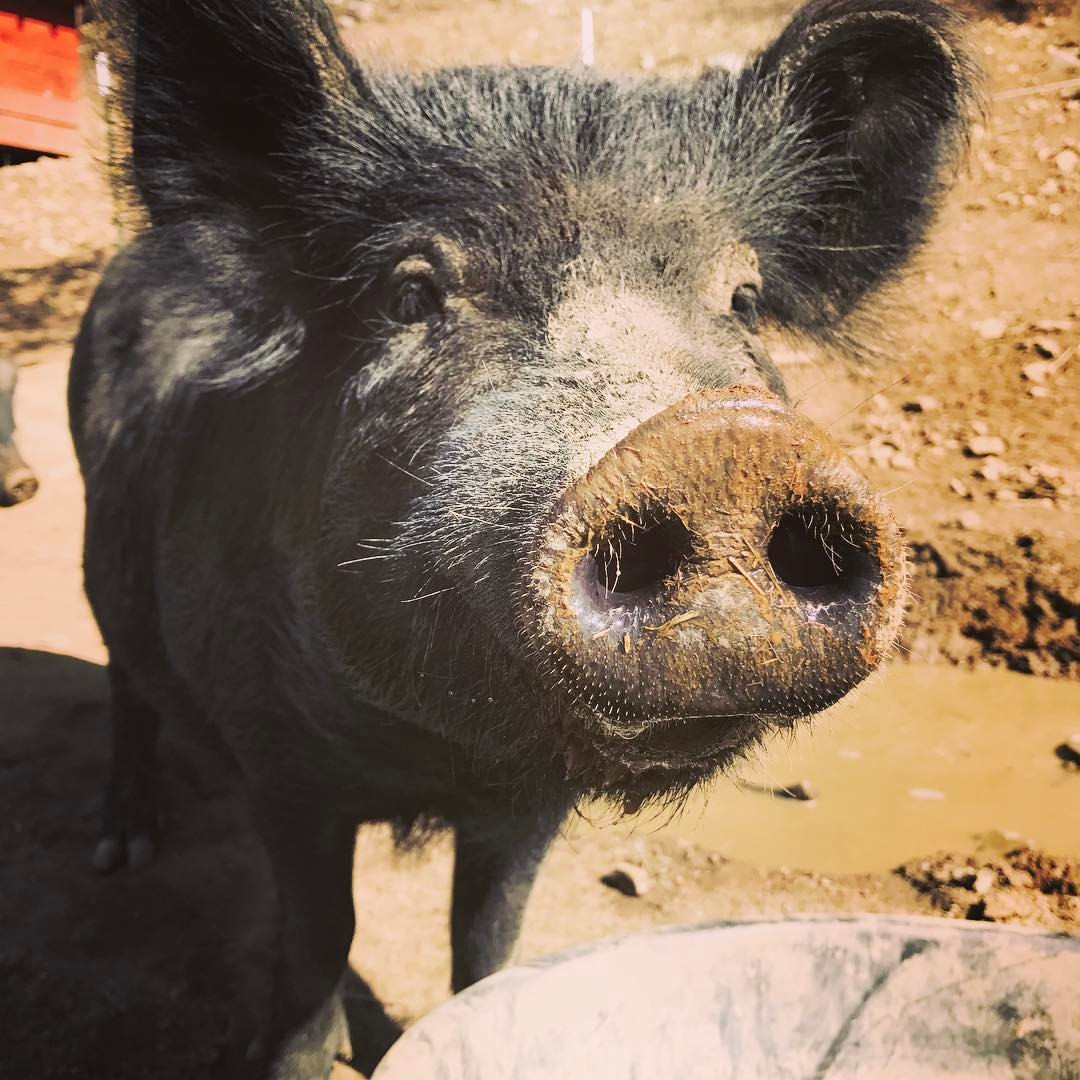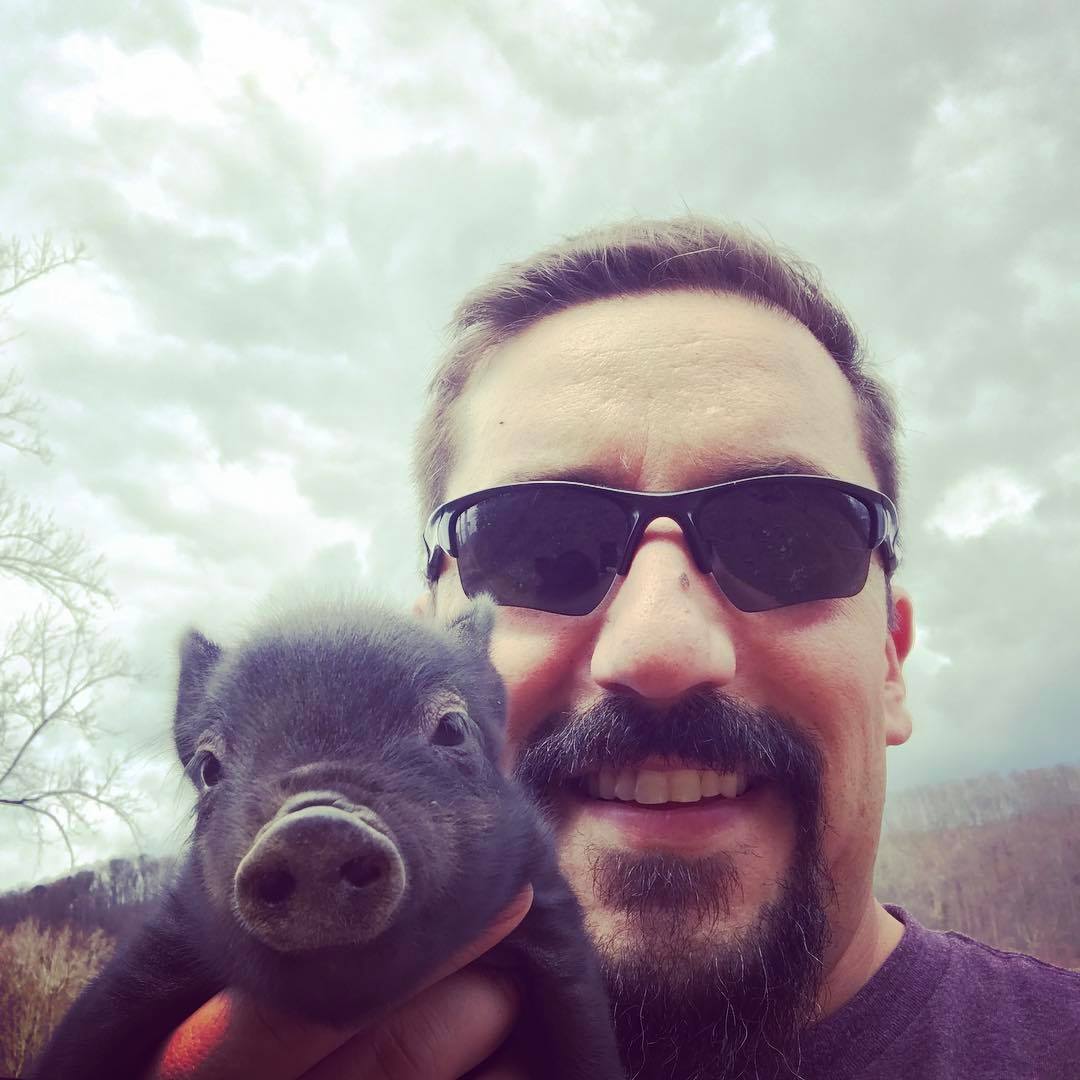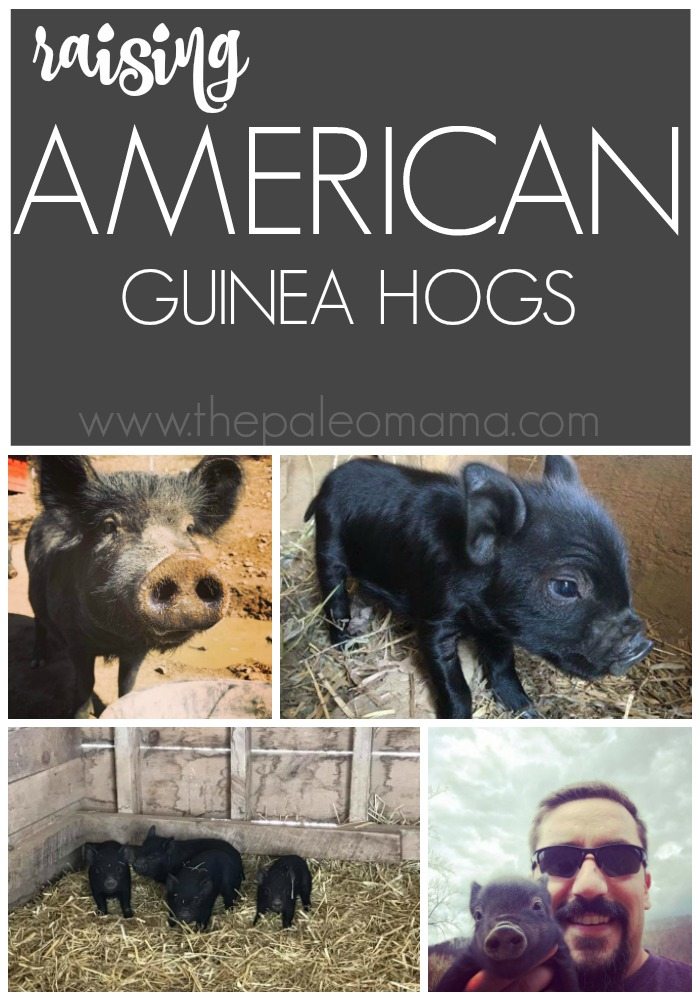How Much Do I Feed My American Guinea Hog Daily

Our homestead just would not be complete without our herd of American Guinea Hogs. We added them to our farm soon after we purchased a beautiful 10+ acres near the Blue Ridge Mountains. The former owners had also raised hogs, so the farm came ready-made with pasture and facilities for our hogs.
We love our heritage pig called the American Guinea Hog. It was the homestead hog of choice in southern states during the 1800s. But just ten or fifteen years ago it was almost extinct in the United States. Because homesteaders like us have been anxious to keep this breed alive, today it is enjoying renewed popularity.
I want to introduce you to the wonderful potential of adding these hogs to your own homestead. There are some very important reasons the American Guinea Hog is a perfect choice for today's homesteaders.
Its Size and Temperament Suit the Smaller Homestead

Adult American Guinea Hogs range in height from 22 to 27 inches tall, and 46 to 56 inches long. Fully adult hogs range from 150 to 300 pounds, depending on sex, frame, and body condition. They are really good looking with their small, upright ears, rather short snouts, and forward facing eyes. Most American Guinea Hogs have medium to long coarse, bristled black hair.
These sweet piggies have such friendly temperaments. They love the attentions their farmer people friends give to them, and really enjoy a belly rub or a back scratch. They are easy to handle and docile as long as their needs are being met. They make really excellent mothers, and even the boars tolerate the little ones well and often show affection toward their little ones.
They are prolific breeders! We began with a small herd of 3 females and 1 boar. Within a year we had a lively herd of thirteen or more, with more little piggies on the way.
American Guinea Hogs Feed and Water Requirements
American Guinea Hogs love a grassy pasture where they can forage to their heart's content. They gobble up grass and weeds as voraciously as you and I might eat a delicious chocolate brownie! They just want a lush pasture with clover or other weeds along with grubs and insects for minerals, plus any table scraps you have for them, some quality hay in winter, and clean water to drink.
We have been blessed on our homestead by being able to partner with nearby organic farmers who will allow us to have their produce that may be unable to be sold because it's not quite perfect, or slightly wilted, or overharvested. We also add our own table scraps, fermented vegetables, and plenty of leftover milk whey from our own raw milk after we separate the cream and make butter and cheese. In addition, especially in the winter months when their pasture lies dormant, we provide a premixed, non-GMO, soy-free feed for them. AGH eat roughly 4 percent of their weight daily, for instance, a 150-pound pig will require 5 to 6 pounds of high-calorie feed each day. Each pig needs 3 to 5 gallons of clean, fresh water daily. Lactating sows will need an additional 1 to 2 gallons each day.
You don't need anything fancy to throw the feed in. We just dump the feed onto the ground and they clean it up perfectly!
The biggest challenge is weight control—they put on weight more easily than other breeds. Overly heavy pigs will have fertility issues, and eventual joint problems and lameness. Monitoring their food intake is important to keep them healthy and content.
American Guinea Hogs Space and Birthing Requirements
Our agroforestry pasture provides plenty of green grassy areas, which extend up the side of our mountain into the trees and shrubs that give added nourishment from soil minerals and grubs and insects. If you don't have much acreage available for pigs to forage in, you will need to practice rotational grazing.

We provide separate areas for birthing mothers and their little piggies with a farrowing house, and another area with the boar house where big daddy can rest while mama and babies get life started well. Most of the time, the mama pigs prefer to make their own birthing nests despite the fact we have a beautiful farrowing house made for them. Our females-in-labor will wander up the side of the mountain and create a comfortable nest to give birth in. All of our females give birth unassisted and without us even knowing. We usually find them the next day or morning feeding their babies in an excluded area of our forest and we plenty of exercise getting Mama and babies moved back down the mountain into the farrowing house.
However the herd loves to be altogether whenever possible. It's so much fun watching them interrelate and enjoy each other. Of course there is a bit of competition for top spot at the slop bucket when it is full!
Guinea hogs adapt well to both cold and hot climates. They handle cold weather well—but only if they have a place to stay dry and out of the elements. They like deep straw bedding, and will keep their bedding areas clean. They need effective fencing to keep them in their special places. We use electric fencing, which has worked well for us.
Pastured Pork, Lard, and Charcuterie Production
These AGH provide excellent pastured pork. Pastured AGH have meat with a beautiful, earthy flavor. Their meat has higher levels of omega-3 fats, which are essential for us human caretakers. Chefs and charcuterie artists prefer to cook with this breed.
Most heritage AGH breeders believe it is the genetics that make the meat taste so good. The marbling, and intramuscular fat hasn't been bred out of these special hogs. However, the taste comes largely from the way they are raised. If raised slowly, outdoors on great free range pasture, they are getting exercise, finding minerals in the soil, and enjoying fresh air and clean water. They are living without stress, and that all adds up to wonderful, flavorful meat.
Butchering and Processing
Butchering is easiest in winter, and may influence at what age you butcher. At 6 months of age you probably have a pig weighing about 60 pounds, with a 50 percent carcass weight. By 1 year of age, your pig probably weighs about 120 pounds, with 60 pounds of carcass. AGH reach their full size at about 2 to 3 years of age, topping out at 200 to 300 pounds.
One thing that is important to know – you don't have to do the butchering yourself if you don't want to. We send our larger livestock (cows, pigs, sheep) off to be butchered and processed. It's something we have decided to do for right now since we are raising so many different types of animals and we find it easier for someone else to do this job for us.
If you do decide to do this, just talk to your meat processor and make sure they know how to work with American Guinea Hog meat. Make sure you save all the bones and organs and get all the fatback so you can make lard. AGH are considered a "lard breed" because they have an exceptional amount of lard on their bodies.
And if you do want some charcuterie cuts, make sure you discuss that with them too.
American Guinea Hog Resources
Our farm is just getting a good start in the growing up of American Guinea Hogs. But we hope to be able to provide others with their own AGH to raise, and with some of the delicious pastured pork we will be able to provide from our own herd.
I am fond of pigs. Dogs look up to us. Cats look down on us. Pigs treat us as equals.
—Winston Churchill
If you think American Guinea hogs may be a good choice for your needs, here are some great resources that we recommend for learning more about this fabulous breed.
• The Livestock Conservancy
• American Guinea Hog Association
Books
• Butchering Poultry, Rabbit, Lamb, Goat and Pork by Adam Danforth
• Charcuterie: The Craft of Salting, Smoking, and Curing
• Homegrown Pork by Sue Weaver
• Ethical Meat Handbook by Meredith Leigh
• Storey's Guide to Raising Pigs by Kelly Klober

melendeznitandeaughs.blogspot.com
Source: https://thepaleomama.com/2017/04/10/american-guinea-hogs/
0 Response to "How Much Do I Feed My American Guinea Hog Daily"
Post a Comment